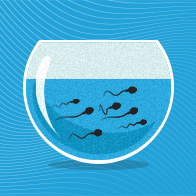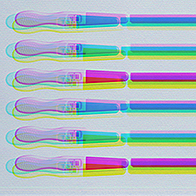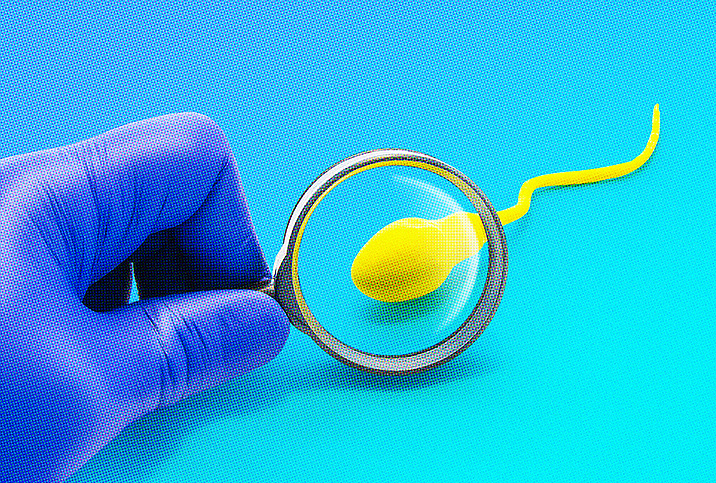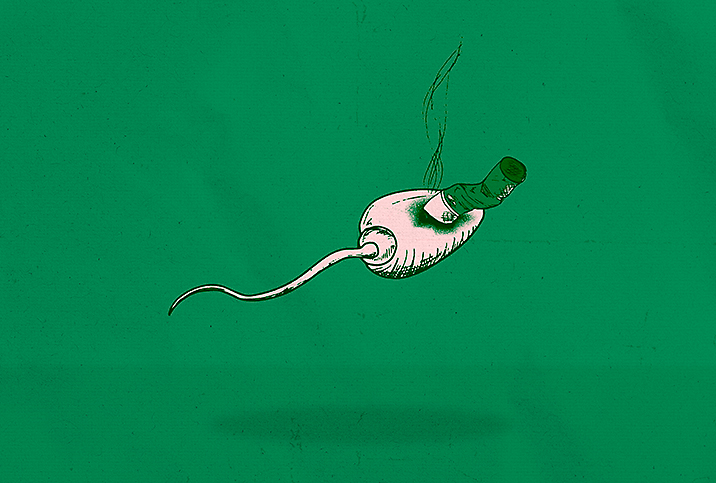Examining the Primary Causes of Male Infertility
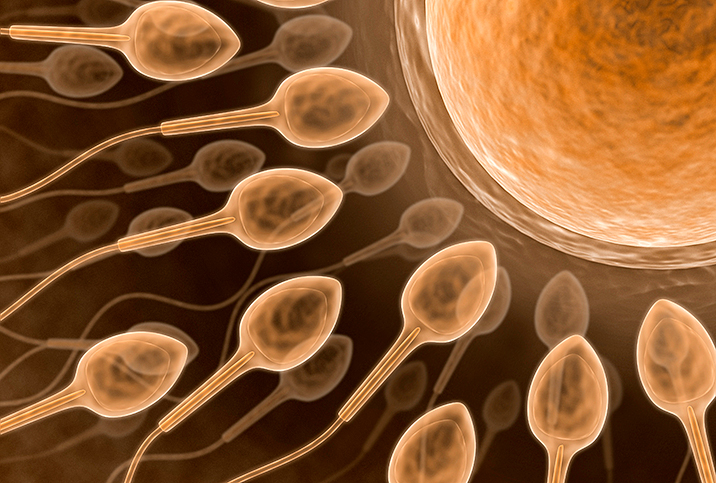
Male infertility is on the rise across the world. Or is it?
Sperm counts are down, yes. Rates of male infertility have increased dramatically in the past several decades, according to a 2017 meta-analysis published in Human Reproduction Update and a 2019 follow-up article in Biology of Reproduction. The article noted that over the past 40 years, average sperm counts have halved and sperm quality has also declined. The authors cited estimates that 1 in 20 men face some form of reduced fertility.
But don't think your swimmers are entirely disappearing just yet. A recent analysis of the meta-analysis drew different conclusions. Authors didn't contest that sperm counts have declined, but they argued that fact alone doesn't necessarily point to a fertility crisis, because the average count is still above the necessary threshold for fertility.
Still, of the approximately 15 percent of all U.S. couples who are infertile, up to 50 percent have a male-factor fertility problem, and of those, 20 percent will not be able to conceive solely because of impaired male fertility, explained Mohit Khera, M.D., MPH, a professor of urology at Baylor College of Medicine in Houston and board-certified urologist who specializes in male infertility.
In short, male infertility is a real issue for a lot of couples who want to conceive. While the global male infertility question is still being studied and debated, medicine can point to several causes of individual male infertility.
Physical problems
Many types of physical conditions or structural problems in the male reproductive tract could impact fertility, Khera said. He mentioned the following as most significant for male infertility:
Varicoceles
Varicoceles, or dilated veins around the testicles, are the number-one cause of male infertility in the world, according to Khera. It's thought that varicoceles are caused by faulty venous valves in the scrotum. When they don't regulate blood flow properly, the blood backs up, the temperature in the testicles rises and sperm production is impaired.
Just how common are varicoceles? They occur in about 15 percent of the general population, but are found in up to 35 percent of men with primary infertility and up to 80 percent of men with secondary infertility (men who fathered a child but are no longer able to do so).
There is hope: After a successful varicocele repair, improvement in semen analysis is expected in 60 percent to 80 percent of men, and pregnancy rates range from 30 percent to 50 percent.
Undescended testicle
Having one or two undescended testicles—this occurs in about 1 percent of infant boys—could lead to significantly lowered sperm parameters, largely because when the testicle remains in the groin or abdomen, the higher temperatures will decrease sperm production. In fact, boys who have two undescended testicles can be completely sterile. Even leaving the testicle undescended for two years could significantly impair sperm-producing cells, so prompt correction of the undescended testicle before the age of 2 may be recommended to reduce the risk of male infertility.
Testicular torsion
Torsion occurs when a testicle rotates on the spermatic cord, which becomes twisted. Blood flow to the scrotum is disrupted, causing swelling and pain. It's a rare condition, occurring in approximately 1 in 4,000 males younger than age 25. However, it can harm fertility later in life: About 30 percent to 40 percent of men with a history of testicular torsion will have an abnormal semen analysis, Khera said.
Infection
Infections of the genital tract, such as those of the prostate, epididymis or testicle, can lead to male infertility, Khera said. He added that if you had mumps after puberty, you may be especially at risk, because there is a link between a mumps infection and diminished function of the testicle, along with sperm production. If you haven't already, be sure to get the mumps vaccine, and while you're at it, the COVID-19 vaccine, too, because COVID infections have been linked to potential male infertility.
Environmental toxins
One of the causes of male infertility—and perhaps a difficult one to accept because it can involve everyday lifestyle factors—are toxins that can affect testicular performance. For instance, if you are regularly exposed at work to environmental toxins—solvents, heavy metals and certain pesticides—or undergo prolonged exposure to heat, sperm production can be impaired. Even soaking too long in a hot tub can impair sperm production.
Khera added that all of the following recreational substances can be risk factors for male infertility:
- Alcohol
- Cocaine
- Tobacco
- Marijuana
Smoking cigarettes has a harmful impact on sperm count and motility, while high alcohol use has been associated with low testosterone levels and a decrease in semen volume, he noted. Additionally, marijuana has been shown to decrease sperm quality, and while data is still emerging, research, so far, suggests that vaping is linked to detrimental effects on the reproductive system.
The following medications can also contribute to male infertility:
- Blood pressure medications, such as spironolactone (Aldactone) and calcium channel blockers
- Drugs used to treat gout, such as colchicine and allopurinol (Zyloprim)
- Cimetidine (Tagamet), an antacid and antihistamine
- Ketoconazole (Nizoral), an antifungal
- Sulfasalazine (Azulfidine), an anti-inflammatory
The good news is, in most cases, the harmful impact on fertility can be reversed if the toxin is removed, according to Khera. The exceptions would be chemotherapy and radiation, both of which can impair sperm production. Cancer treatments involve toxins, but they're potentially lifesaving ones, so in those situations, banking some sperm is usually recommended prior to treatment.
Let's talk about sex, baby
Infertility for couples is defined as no conception after a full year of unprotected sex, or after six months if the female is older than 35.
Successfully conceiving can sometimes require a lot of knowledge about the inner workings of the female reproductive system.
A woman is fertile for only about six days during her menstrual cycle, and once an egg is released, it lives for only 24 hours. This means sex has to be timed appropriately so plenty of sperm are ready and waiting to swim furiously to that egg. Getting the timing right isn't always easy, though. For instance, Khera noted that one study found 21 percent of infertile men didn't know when their wife was fertile.
Khera recommends couples have sex every 48 hours around ovulation, because sperm live for about two days in cervical mucus.
In addition to having sex at the wrong time or not having enough sex at the right time, Khera noted plenty of other sex-related factors could lead to infertility: premature ejaculation, lack of ejaculation, retrograde ejaculation, failure to vaginally penetrate due to severe penile deformities, erectile dysfunction (ED) and even using the wrong type of lubrication.
Erectile dysfunction, in particular, can be an isolating experience for couples who experience it as a cause of infertility, said Lora Shahine, M.D., FACOG, a reproductive endocrinologist at Pacific NW Fertility and a clinical associate professor in the Obstetrics and Gynecology Department at the University of Washington in Seattle.
"There are many couples suffering in silence, ashamed that the reason they cannot have a baby is because they cannot complete intercourse," Shahine said.
Fortunately, most coital-related factors of male infertility can be addressed through education and counseling, according to Khera. If erectile dysfunction is the root cause, Shahine recommends a consultation with a urologist or male fertility specialist, because the specific type of treatment—and ultimate outcome for achieving pregnancy—will be largely dependent on the type of erectile dysfunction the male partner is experiencing.
Unexplained male infertility
Shahine explained that one of the most common causes of male infertility is actually not a direct cause at all. Instead, it's dubbed "unexplained" male infertility.
"Sometimes, there are clear causes, like men taking exogenous anabolic steroids for muscle building, history of chemotherapy or radiation for cancer treatment, or an anatomical issue like absent vas deferens, but the majority of the time, there is no clear answer for poor sperm parameters or absent sperm production," she said.
Khera added that up to 25 percent of male infertility cases are due to unknown causes, which are primarily thought to be related to genetics. In some cases, without clear causation, infertility may also be linked to age.
"Like advanced maternal age, advanced paternal age is also considered a risk factor for male infertility," he noted.
All (or some) of the above
Similar to female infertility, several compounding factors may be involved in male infertility. For instance, a man could have a combination of physical problems, such as low sperm count and retrograde ejaculation, or erectile dysfunction could be combined with a lifestyle toxin, like smoking.
This is why it's important to have a complete workup to evaluate exactly what's going on. A complete sperm analysis by a urologist or male fertility specialist determines ejaculate volume, sperm count, and the morphology (shape) and motility (movement) of the sperm, Khera said. Anytime sperm counts fall below 15 million per milliliter, and abnormal motility or morphology is present, there is a link to decreased fertility.
In any situation and no matter the cause, both doctors agreed that anytime a couple is experiencing infertility, they should seek the counsel of a doctor. Time is of the essence, and everyone's fertility decreases with age, so if you're ready for baby-making, don't hesitate to seek help.







